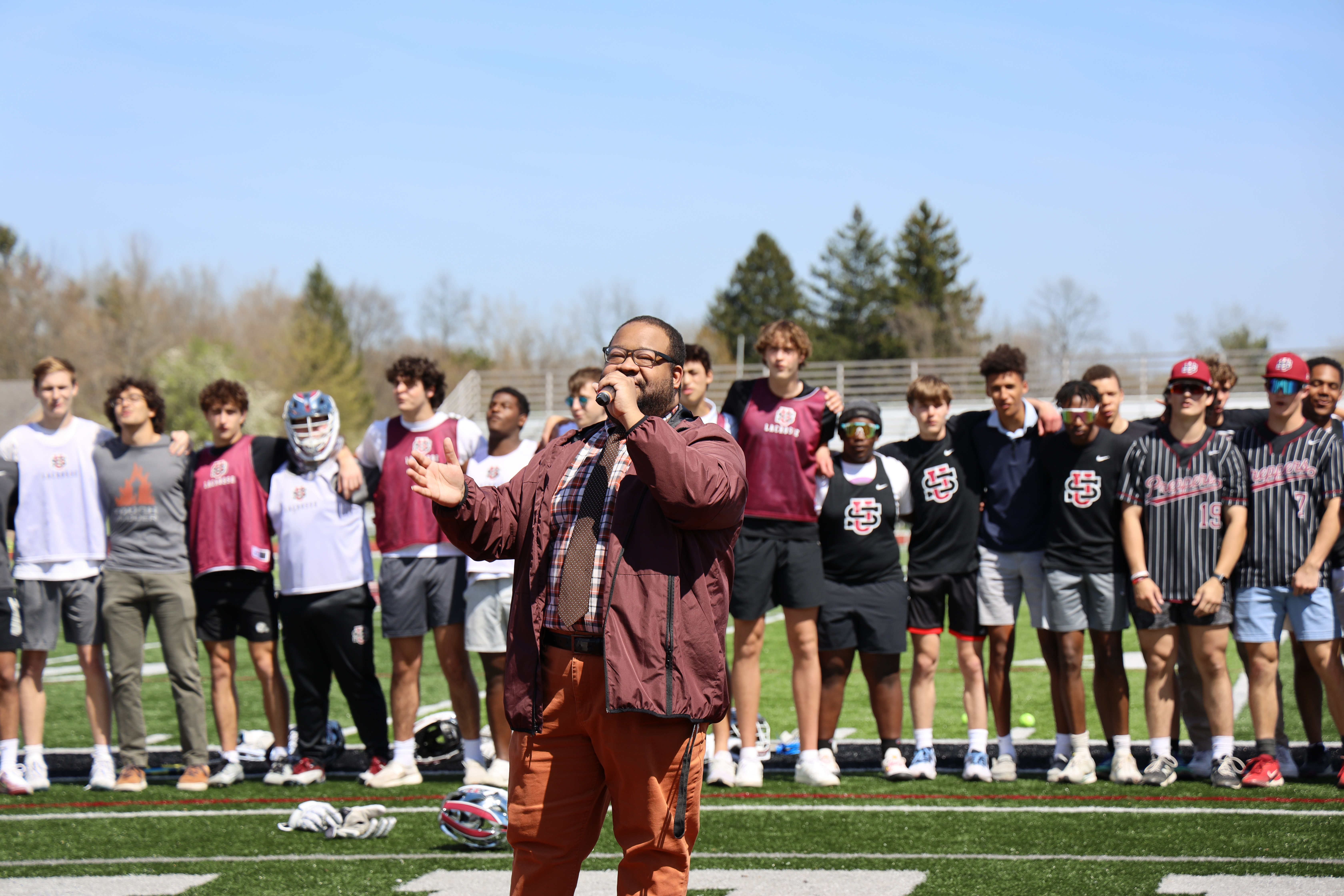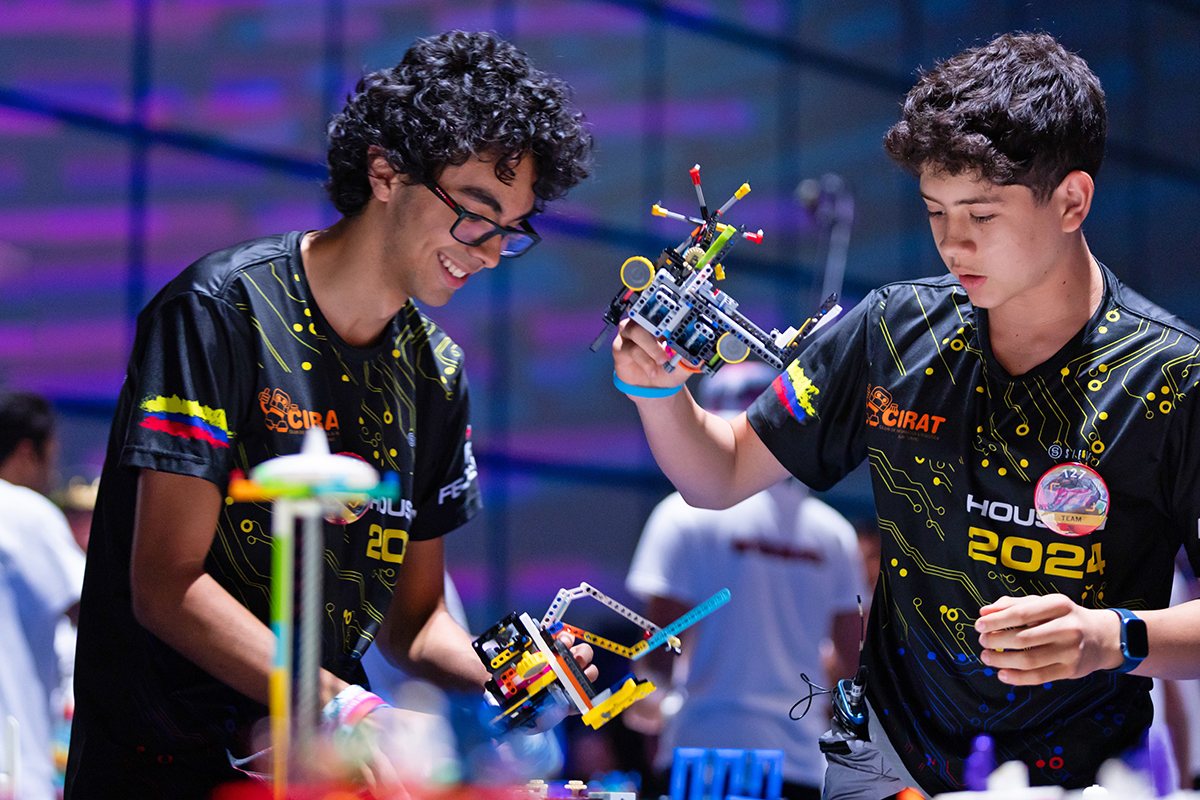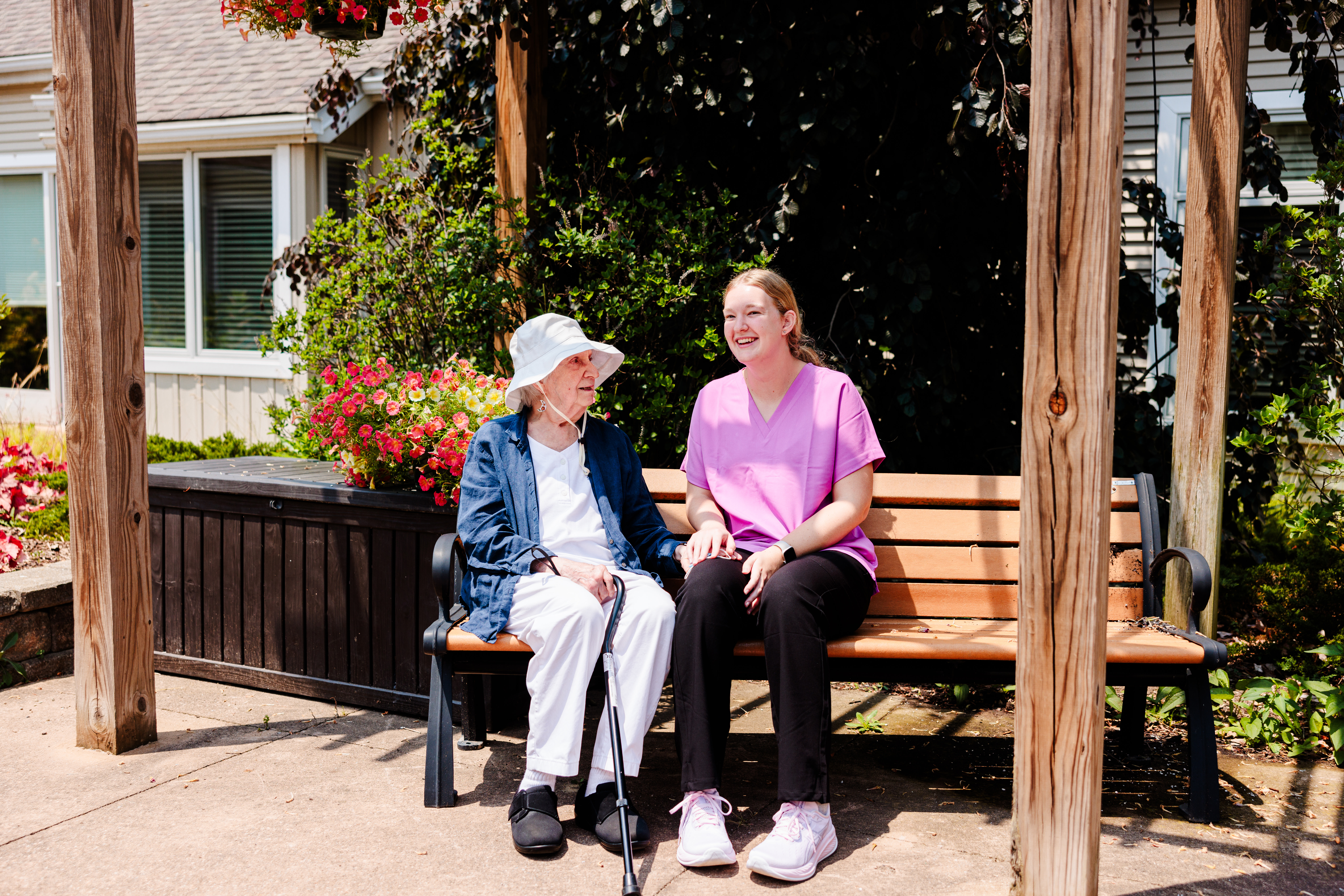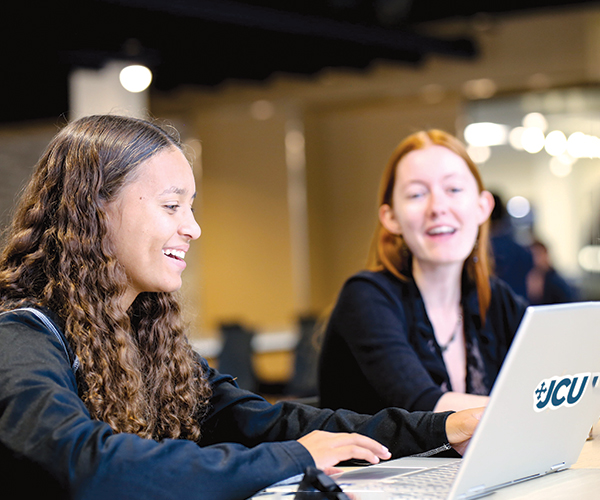Mentorship Puts Cleveland Students in Real World Situations
by Kristen Hampshire | Aug. 20, 2025 | 11:00 AM
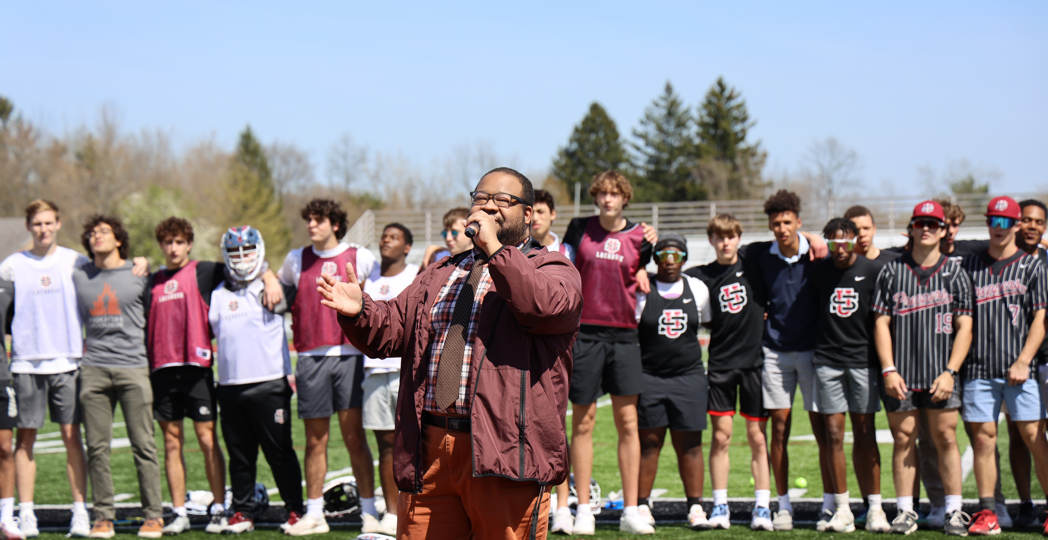
Courtesy University School
Strip away the syllabus, exams, labs, papers and projects. Push aside GPAs and ACTs. Hush the chimes for class changes and bells for dismissal.
The core of school is community — relationships of all kinds: coincidental and intentional, casual and formal. Layers of support through naturally occurring and programmatic mentorship give students a support network that enriches their academic experience and prepares them for life beyond 12th grade.
Mentorship matters
This is nothing new. However, schools across Northeast Ohio have taken a closer look at how structured mentorship programs benefit students’ social-emotional growth and success.
“Exposure to different voices leads to bigger thinking, and it goes back to, ‘You don’t know what you don’t know,’” says Andrew Cruse, director of the school’s Launchpad at Laurel program that includes hands-on research, mentorship and student-led projects.
And the “don’t know” can range from career exploration to growing soft skills like how to send a cold email to ask for an
opportunity.
“In the post-pandemic world, there has been an apparent need to build social-emotional connections for students and bring relationships back to the forefront,” says Megan Wackerly, assistant principal for academics at Saint Joseph Academy.
“We can be our own worst critics, and mentors help students see themselves differently,” says Adrian Hicks, Saint Joe’s assistant principal for student success. Girls in particular “lose that vibrant confidence to tackle the world” beginning at about age 8, she says.
A national survey commissioned by the mentorship platforms Être Girls and YPulse reported 91% of girls say they’d be more confident with a mentor, and the number tips to 93% of women in the financial services sector.
There are fewer direct stats related to boys, though anecdotal evidence indicates mentors reduce isolation while building
resilience and purpose.
At University School, sponsor groups of at most eight to 10 students “have a pulse on what’s going on with each other,” says Ashley Worthington, English teacher. “They cheer each other on and keep an eye on each other.”
Making Connections
Saint Joe’s freshman advisory program helps ease the transition into high school — a helpful move, since girls come from more than 50 different zip codes. Assigned student clusters ensure students who went to the same elementary school or play sports together are in different advisory groups.
Generally, a homeroom is split into two advisory groups that meet daily.
“We noticed right away there is a buy-in and quicker feeling of belonging here,” Hicks says.
All freshmen and new students at St. Edward High School are assigned to a multi-grade advisory cluster with scheduled school day meetings.
“It’s important for students to know they have someone to rely on who is close to their age, and often, they are more likely to ask questions or share concerns with a peer,” says Matt Wallenhorst, dean of student life and culture at St. Edward High School.
Teens naturally spend more time with peers than with their parents.
“Friends become their primary influencers,” he points out, noting how the groups set the stage so “every student feels a part of something.”
Upperclassmen become mentors along with advisors who oversee the groups. And each meeting begins with students scanning a QR code to complete a five-question “temperature check” survey. How are you feeling today? How are classes? Students can click “yes” if they want a teacher or advisor to reach out to them.
“It’s a good outlet to connect, especially if it’s personally difficult for you to walk up to a teacher face-to-face and ask a question or get help,” says Owen Metzger, a St. Edward’s senior.
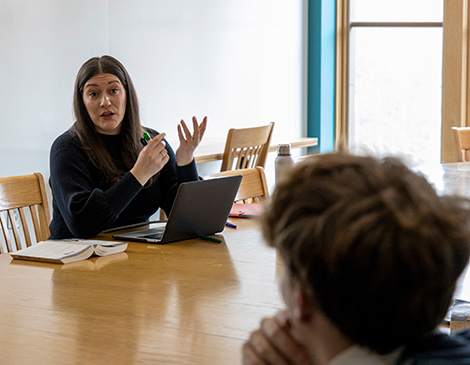
Building a Pipeline
Private schools build layers of mentorship opportunities, cultivating students’ ability to foster relationships and put themselves out there as they advance in grade. For example, at Laurel, eighth graders participate in independent projects, Cruse says.
As freshmen, students move into a protege program that involves researching a career and connecting with a few alumnae professionals to set up meetings and learn more about their vocations. In a culminating Capstone Scholars program, students tackle real-world challenges with initiatives that bridge into the community. For instance, one student developed an organization to raise funds for setting up gluten-free sections at food banks.
“These programs give students the agency and voice to use their resources, and that will help elevate them to succeed in what they aspire to do next, along with becoming more successful in the classroom,” Cruse says.
A similar structure at Magnificat involves an ongoing Compass counseling small-class weekly meeting and Sophomore Service that begins in the second part of students’ first year and segues into community projects. As juniors, students shift into the Genesis program, which includes a 40-hour internship experience. It closes with all four grades at an Empowerment Fair, where more than 60 alumni have booths, and the girls learn to network and build connections. “Different layers of mentoring relationships and programs start with the girls’ comfort level with peer-to-peer groups and faculty advisory, and lead into building a pipeline,” says Colleen Greller, Magnificat’s dean of faculty and academics.
House Rules
Eight boys, seated at a round dining table in the Upper School dining room at University School, catch up on the latest wins, upcoming exams and off-hours happenings with friends and family. They sprinkle in some humble brags and jabs you’d expect among teens, along with a deep level of support and understanding.
Their sponsor teacher passes a side dish to one of his “house” students, piping in occasionally, nodding. He is present — though, sometimes, the boys forget director of music Devon Steve is having his lunch, too.
“People love to connect over food across cultures and generations,” says Steve, who is a “head of house” and sponsor of a cluster of 10 ninth through 12th graders. Several sponsor groups comprise a house of about 40 boys, and there are 10 houses across the student body of about 400.
Incoming freshmen and new students are assigned to a house they “live in” until graduation.
Sometimes, houses meet for larger group team-building activities, and every day the houses eat together with their sponsors.
But eating every day with your teacher?
“Lunch offers an opportunity to relax, take a break in the day,” says Steve, adding that conversations jump from the latest guest speaker, soccer game or frustration with a test score. “They will pretty much say anything because they are respectful, and while they acknowledge an adult is at the table, they’re not guarded. They’re honest and comfortable, and this comes from the connection built between faculty and students.”
Keeping house is much more than doing lunch. Sponsor groups participate in structured meetings centered on topics designed to mentor and grow the boys.
“We become so much more than teachers to them,” says Ashley Worthington, a head of house and English teacher. “We make them feel known, loved and personally connected to the school.”
She adds, “The sponsor group allows me to really get to know the boys and help them understand themselves as students, as friends and as mentors to each other — and to encourage them to be the best versions of themselves.”
Steve says he gets to know his student group in ways he wouldn’t otherwise, like on the field while he watches their games, before a big exam or after a disappointing assessment.
A Real World View
Hawken’s three-semester STEMM (Science, Technology, Engineering, Math and Medicine) pathway is a research-based program that guides students through scientific inquiry that culminates in a professional-level research experience and presentation.
The summer research project includes 160 hours in a mentored lab at institutions like local teaching hospitals and universities. Often, students enter labs mid-project. They learn to dive in, ask questions, listen, watch.
Labs, large and small, participate, as do mentors who are hands-on and more supervisory.
“We prepare students for the different personalities of mentorship,” says Dr. Lacy Chick, director of the school’s Paepke STEMM Research Program.
“It’s a working environment,” she reminds students of the pressures their mentors face, and an overlooked reality: They have lives, too. Career, kids, community — finding out how their mentors manage it all removes the rosy tint view for a real look at what a career could look like.
Through STEMM, Chick emphasizes partnering with mentors who see through a shared, represented lens.
The students find their mentors, with guidance and Chick’s STEMM network, and they learn the art of opportunity inquiry. Sending that email asking for a chance.
Chick distributes mentor questionnaires to students to pair them with mentors better — it’s a two-way street of development and “mutually beneficial.”
For more updates about Cleveland, sign up for our Cleveland Magazine Daily newsletter, delivered to your inbox six times a week.
Cleveland Magazine is also available in print, publishing 12 times a year with immersive features, helpful guides and beautiful photography and design.
Trending
-
1
-
2
-
3
-
4
-
5

